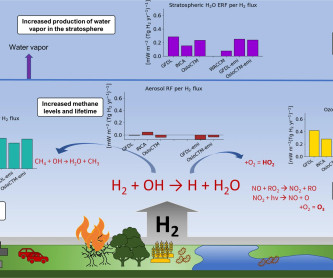CICERO-led study finds global warming effect of leaked hydrogen almost 12x stronger than CO2
Green Car Congress
JUNE 12, 2023
Unlike exhaust from burning coal and gas that contains CO 2 , burning hydrogen emits only water vapor and oxygen. Hydrogen is not a greenhouse gas, but its chemical reactions in the atmosphere affect greenhouse gases such as methane, ozone, and stratospheric water vapor. Sand et al.












Let's personalize your content